Lesson 3 – Define whole steps and half steps
You might ask why should I concern myself with music theory in general and scales in particular? My personal reason for caring about theory is that a small bit of knowledge makes the road towards mastery of your instrument so much easier. If you know something about musical key structures, you most likely won’t have to ask ‘what is that off-chord?’ If you know something about chord structures, the whole world of vocal and instrumental harmony is open to you. If you know something about scales, you’ll have all kinds of interesting riffs to use in building your own personal, creative breaks on songs and instrumentals. And to do all this, you have to know how to build a scale; and, to build a scale, you need to understand whole steps and half steps.
First, let’s review all the note names on the piano keyboard. Take a look at this diagram and make sure you’re confident of all the note names.
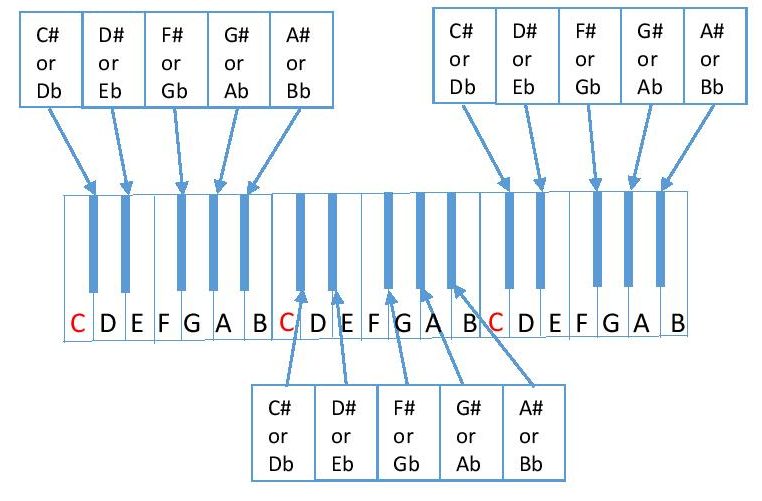
Now, let’s define the term ‘half step’. Simply put, if two notes are adjacent to each other on the keyboard, they are a ‘half step’ apart. Adjacent means they are right next to each other and you don’t have any notes between them. Refer to the following diagram and you will see that B and C are adjacent to each other (no note between them). So, B and C are considered a half step apart.
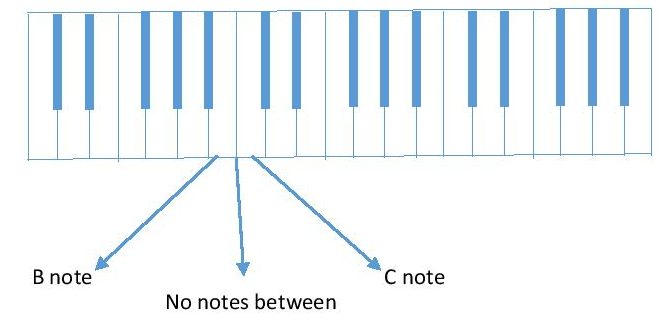
Refer to the next diagram and you’ll see that E and F are adjacent to each other. E and F are also considered a half step apart.
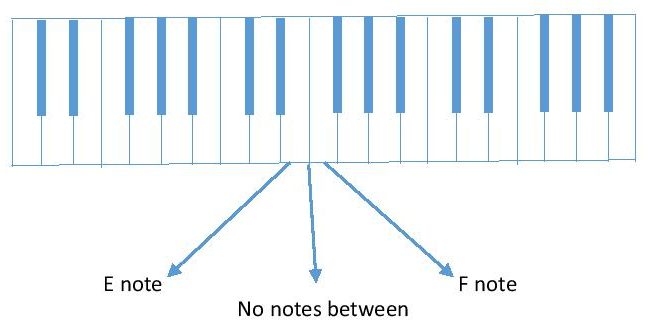
Refer to the following diagram and you’ll see that C and D are NOT adjacent to each other; the note C#/Db is between them. C and D are NOT a half step apart.
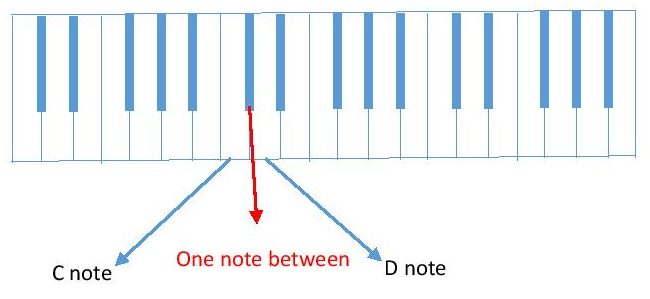
Refer to the following diagram and decide if G and G# are a half step apart?
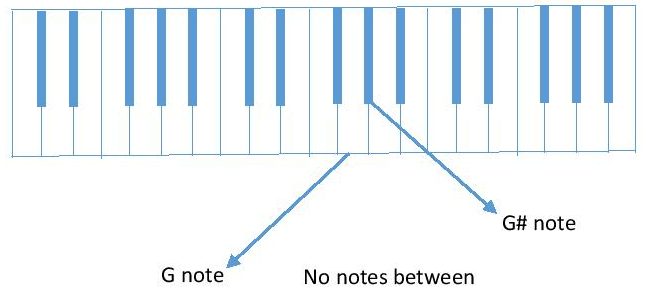 Ask yourself, are these notes adjacent to each other or do I have to skip a note between them? Answer is no, I don’t have to skip a note; they are adjacent to each other and are therefore a half step apart.
Ask yourself, are these notes adjacent to each other or do I have to skip a note between them? Answer is no, I don’t have to skip a note; they are adjacent to each other and are therefore a half step apart.
Refer to the following diagram and decide if F# and G are a half step apart?
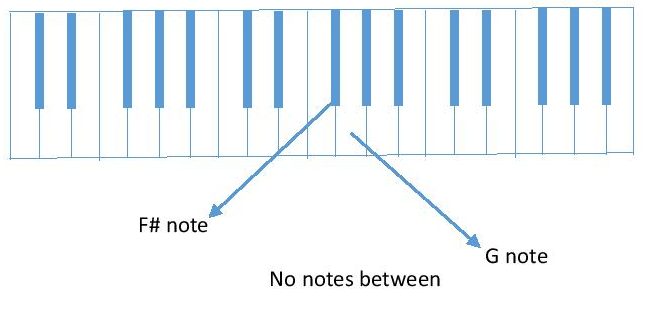 You don’t have to skip a note so they are adjacent to each other and are indeed a half step apart.
You don’t have to skip a note so they are adjacent to each other and are indeed a half step apart.
Refer to the following diagram and decide if C# and D# are a half step apart?
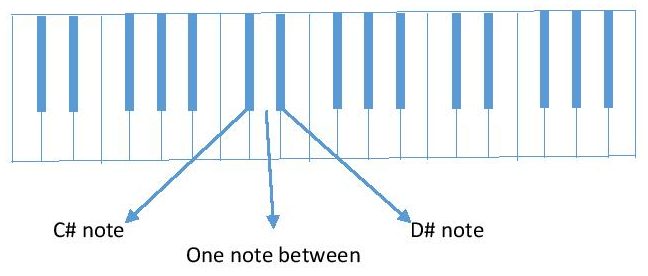 You have to skip a note (D) between them so they are NOT a half step apart.
You have to skip a note (D) between them so they are NOT a half step apart.
Refer to the following diagram and decide if Bb and C are a half step apart?
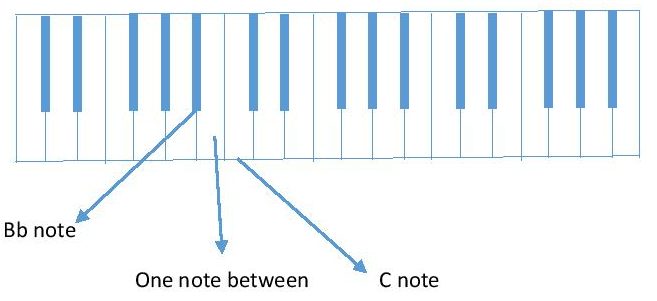 You have to skip a note (B) between them so they are NOT a half step apart.
You have to skip a note (B) between them so they are NOT a half step apart.
Here is a table for you to complete as a quiz on the material we have covered so far. Fill in the second column with the note name that is a half-step above the note in the first column.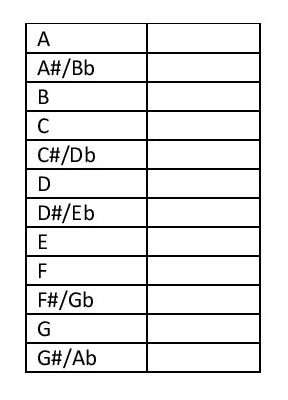
Answers are below.
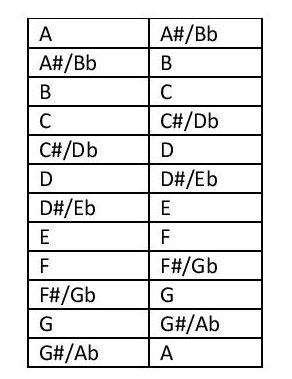
Now let’s define the term ‘whole step’. Look at the diagram below. If we start with C, you have to skip a note (C#) to get to D. So C and D are considered a ‘whole step’ apart.

Let’s do another pair of notes. Start with F. Skip one note and only one note (F#) and land on G. F and G are a whole step apart.
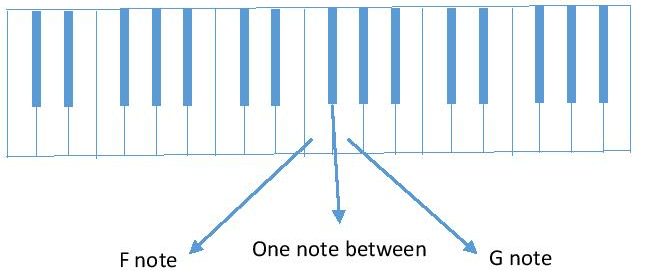
Let me guide you through the next example. Start with B. What note is a whole step up from B? To find a whole step up from B, you have to skip the adjacent note (C) then take the next note, which is C#/Db. So, C#/Db is a whole step up from B.
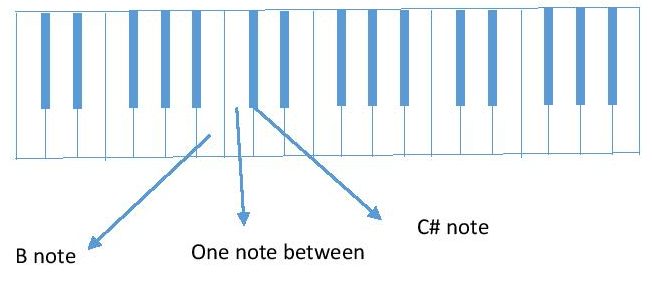
What note is a whole step DOWN from B? The black note A#/Bb is adjacent to B; skip that one. What’s next? If you said A, you got it!
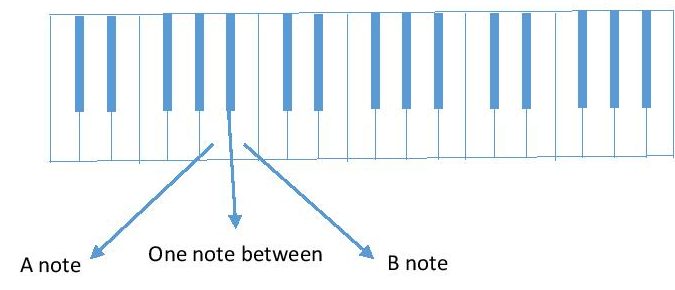
Here’s another quiz for you. Fill in the second column with the note that is a whole step above the note in the first column.

Here are the correct answers.
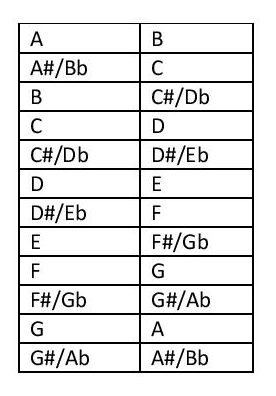
Download a PDF version of this lesson here.